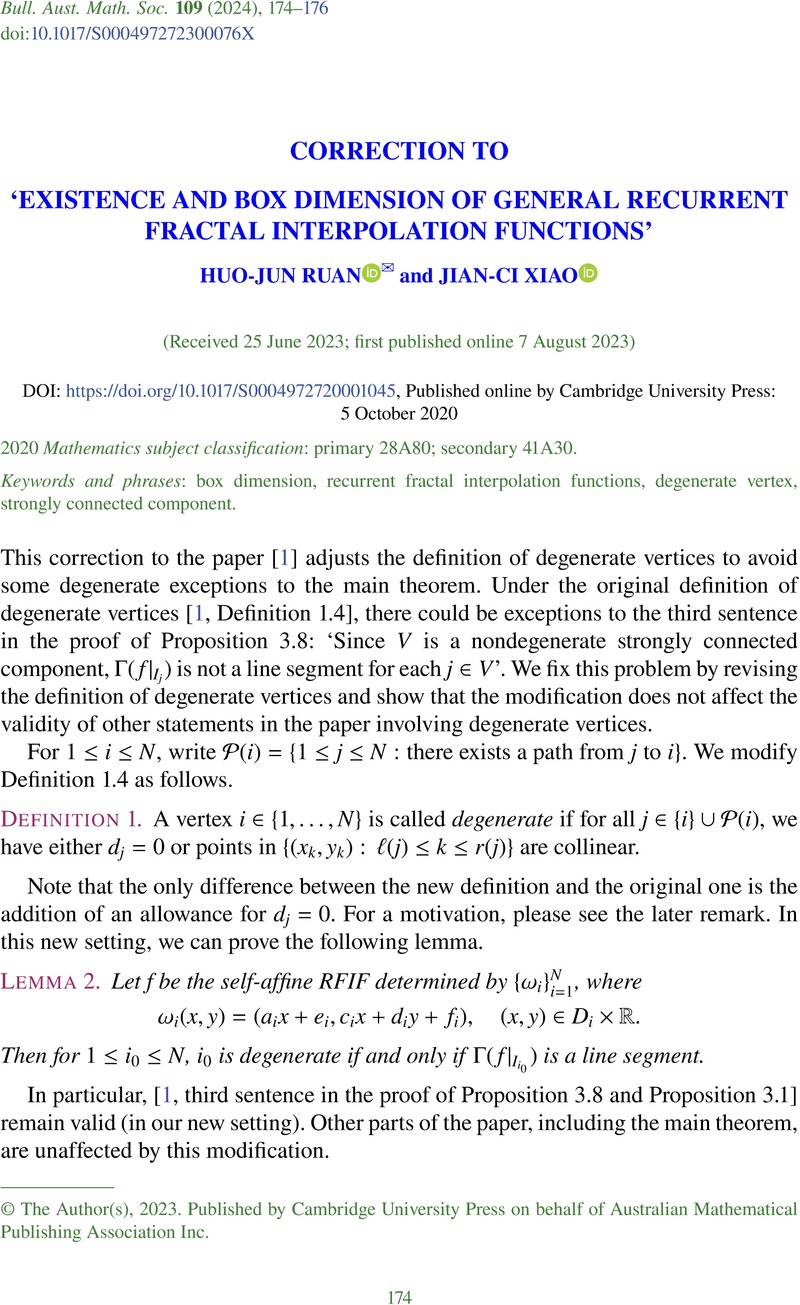No CrossRef data available.
Article contents
CORRECTION TO ‘EXISTENCE AND BOX DIMENSION OF GENERAL RECURRENT FRACTAL INTERPOLATION FUNCTIONS’
Published online by Cambridge University Press: 07 August 2023
Abstract
An abstract is not available for this content so a preview has been provided. Please use the Get access link above for information on how to access this content.

Keywords
MSC classification
Primary:
28A80: Fractals
Information
- Type
- Correction
- Information
- Bulletin of the Australian Mathematical Society , Volume 109 , Issue 1 , February 2024 , pp. 174 - 176
- Copyright
- © The Author(s), 2023. Published by Cambridge University Press on behalf of Australian Mathematical Publishing Association Inc.
References
Ruan, H.-J., Xiao, J.-C. and Yang, B., ‘Existence and box dimension of general recurrent fractal interpolation functions’, Bull. Aust. Math. Soc. 103 (2021), 278–290.CrossRefGoogle Scholar


